Did you know that an average person spends over a third of their day online? That’s a lot of time to be looking at websites. And if you’re trying to sell something, that’s a LOT of eyeballs and potential customers.
Which is why it’s so important to make sure your website is as good as it can possibly be. But what if you’re not a web designer or developer? Or don’t know how to code? Or maybe even don’t know where to start?
It can feel impossible—but it doesn’t have to be! In this piece we will discuss the Top 10 website design rules for Marketing Managers. This will enable the business to avoid common web development mistakes, & to create an outstanding website that accurately reflects your brand identity.

We’ll also showcase an example of a brand that is doing a great job with creating both a memorable website experience (for their visitors), while also generating optimum traffic, lead and revenue.
1. Choose The Right Technology
1. Choose The Right Technology


Choosing the right technology is crucial for meeting both internal & marketplace expectations. It involves selecting the right goals, content needs, user experience requirements, scalability, SEO capabilities, and mobile friendliness. Anticipating future growth and updates, making an informed technology choice is vital for success in the digital marketplace.
- Explore popular CMS and web development platforms, conduct thorough research on their features, benefits, and limitations to identify the most suitable option for your project.
At VooDu Marketing, we utilise many CMS platforms such as WordPress to run our clients’ websites. Our approach involves carefully analysing project specifications, budget, and timeline before determining the ideal technology stack. Based on the client’s business & operational objectives, we opt for a CMS platform that is offers flexibility, scalability, customization, and user experience.
- Selecting the wrong or poorly supported CMS could pose: Compatibility issues, performance limitations, security vulnerabilities, scalability challenges, maintenance difficulties, a shortage of skilled developers, and risks of obsolescence.
2. Don't Make Your Website Too Complex
2. Don’t Make Your Website Too Complex
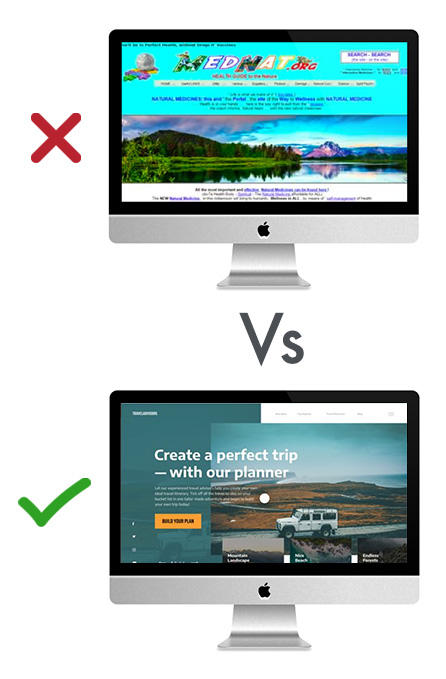
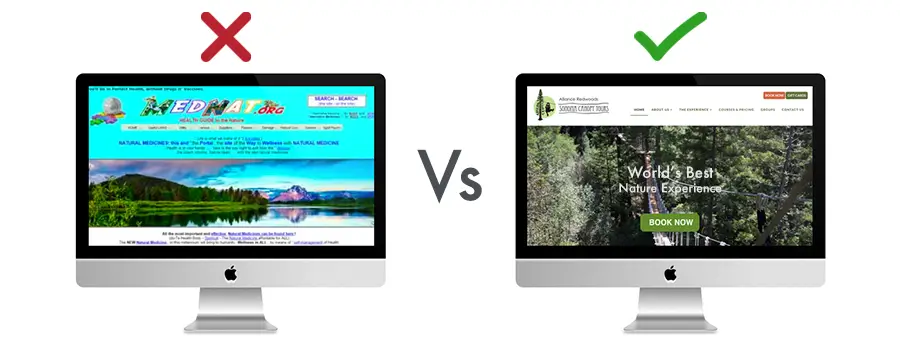
When it comes to website design, simplicity is often the key. Avoid using too many colours, fonts, or images on your website. This can make it look cluttered and confusing, while making it slow and impacting user experience. Stick to a simple and clean design that is easy on the eyes and emphasizes your brand’s message.
- Tailor your web design to your target market. For instance, if your target audience consists of people aged 50 and above, prioritize clean layouts, large and clear fonts, simple colour schemes, and intuitive navigation.
Additionally, employ legible text sizes, non-distracting website backgrounds, contemporary designs, and expertise in direct response marketing. Make sure that the design is helpful and does not create friction & resistance.
- Opting for a complex design can lead to a negative user experience and drive visitors away from your site.
3. Make Sure It's 100% Mobile Responsive
3. Make Sure It’s 100% Mobile Responsive

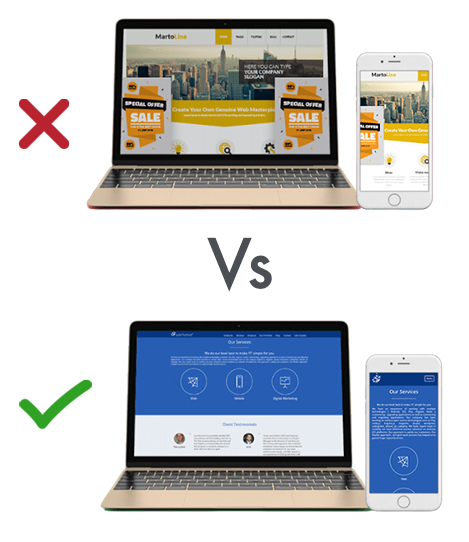
In today’s mobile-first world, 92.3% of internet users access the internet using a mobile phone. It’s crucial to ensure that your website is responsive and mobile-friendly. A responsive website will not only make it easier for users to navigate and view your content but also affect user experience and SEO.
Google favours mobile-friendly websites in its search results, which means that you’ll create an optimal user experience across all platforms while boosting your SEO efforts at the same time.
- Use responsive design techniques such as fluid grids, flexible images, and media queries to ensure that your website adapts to different screen sizes and resolutions. Test your website on various devices and use tools like Google's Mobile-Friendly Test to identify and fix any responsiveness issues. Prior to launching your website, it must be tested on iOS and android separately.
- If it is not entirely mobile responsive, you will risk losing potential customers who are browsing on their mobile devices. This can result in a significant decrease in traffic, poor SEO performance and ultimately, a decrease in revenue for your business.
4. Avoid Flashy & Unnecessary Features
4. Avoid Flashy & Unnecessary Features
It may be tempting to include all sorts of bells and whistles on your website. It’s important to avoid unnecessary features that can slow down your website’s loading time. Stick to the essentials and make sure that your website is optimized for speed, performance & serving a memorable customer experience.
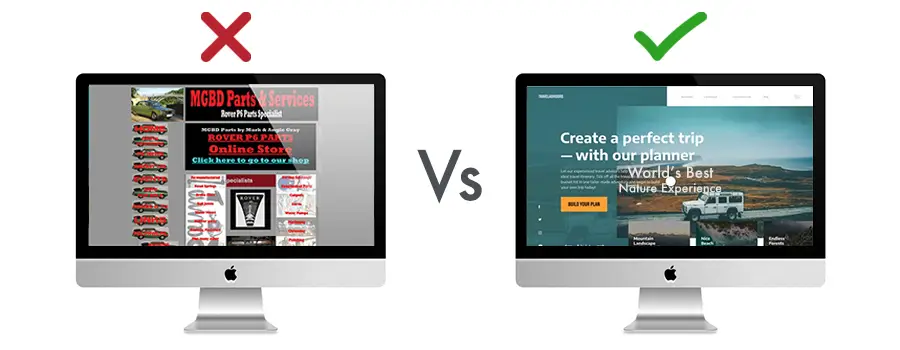
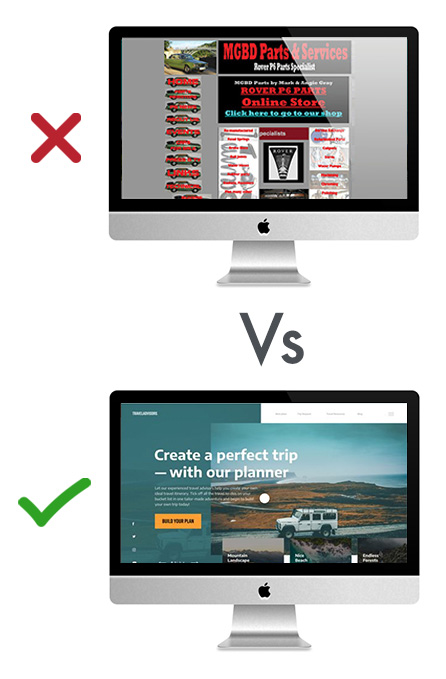
- Optimize your code, compress images, avoid excessive pop-ups or ads, and leverage caching techniques to improve your website's loading speed.
- Unnecessary features can cause poor user experience and high bounce rates. Visitors may become frustrated with slow-loading pages and abandon your site.
Additionally, a slow website can negatively impact your search engine (SEO) rankings, making it harder for potential customers to find you online.
5. Optimising User Experience (UI & UX)
5. Optimising User Experience (UI & UX)
UI (User Interface) and UX (User Experience) are two crucial aspects of web development that greatly impact the success and effectiveness of a website. While UI focuses on the visual design and layout, UX encompasses the overall experience and interaction that users have with the website.
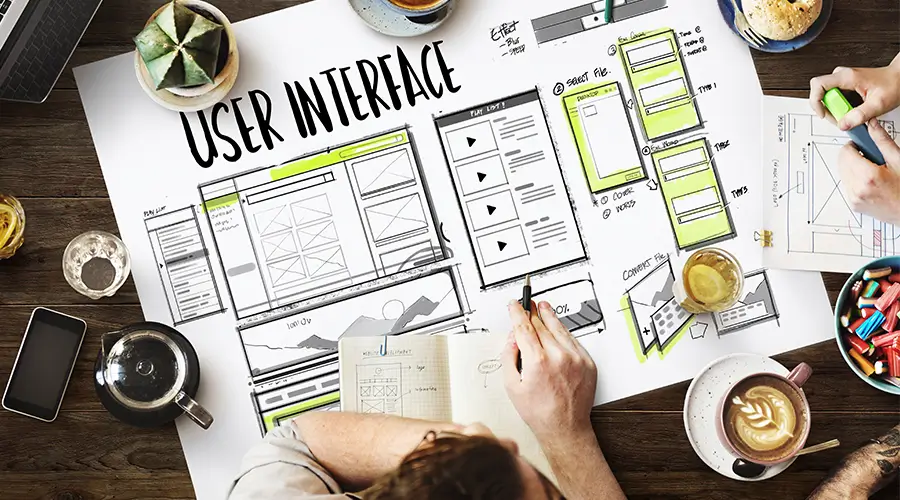

Your website should be designed with the user in mind. This means providing a good user journey that is intuitive and easy to use. Make sure that your website’s navigation is easy to understand and that users can easily find what they’re looking for.
- Understand your audience.
- Follow accessibility guidelines.
- Keep it simple.
- Be responsive.
- Optimise load times.
- Maintain visual consistency.
- Test and iterate.
- Monitor user behaviour.
- Conduct user research & usability testing.
Use these insights to create a user-friendly interface and intuitive navigation. Consider adding search functionality for easier content discovery.
- Not optimising user experience can result in missed opportunities, reduced satisfaction, and a negative impact on your brand reputation.
6. Make The Navigation Easy
6. Make The Navigation Easy
Navigation is a critical part of your website’s UX. Make sure that your website’s navigation is easy to understand and that users can easily find what they’re looking for. Use clear and concise labels for your navigation menu and ensure that it is accessible from every page on your website.
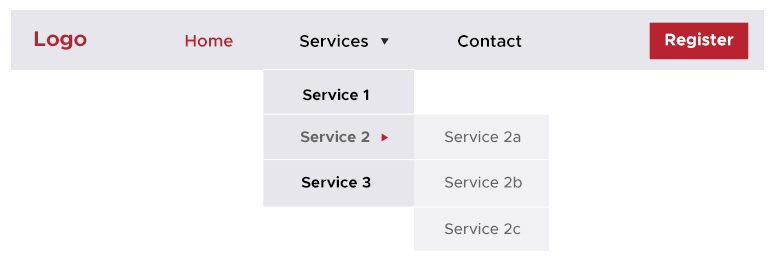
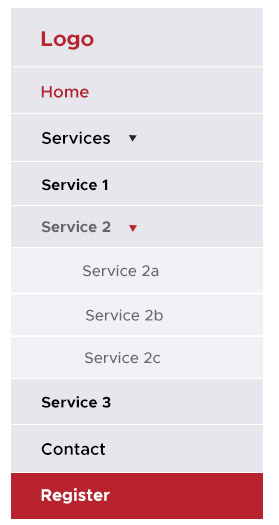
- Use drop-down menus or submenus for larger websites. Keep the navigation consistent across all pages for a seamless user experience.
- Bad navigation causes higher bounce rates, decreased engagement, and lower conversion rates.
Additionally, search engine crawlers may have difficulty indexing your website’s content, which could negatively impact your search engine rankings.
7. Keep Your Pages Tidy & Organised
7. Keep Your Pages Tidy & Organised
A cluttered and disorganized website can be frustrating for users. Make sure that your website’s pages are tidy and well-organized, with clear headings and subheadings that make it easy to understand the content.
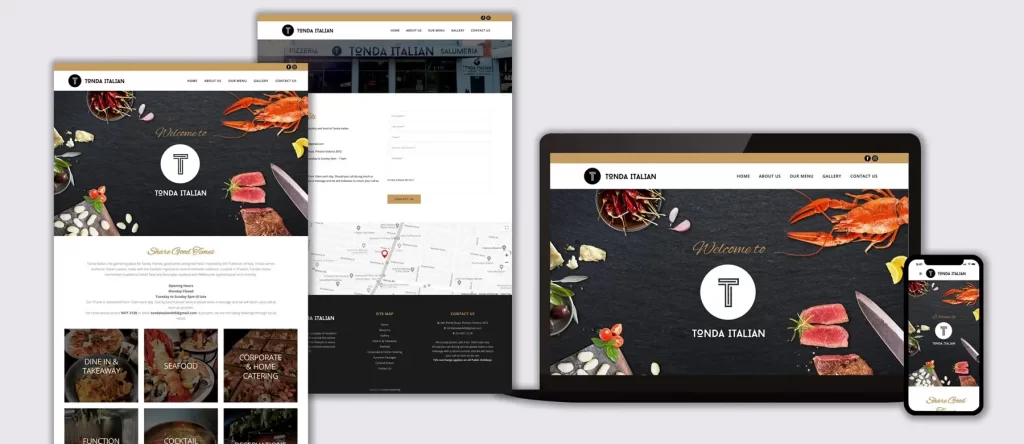
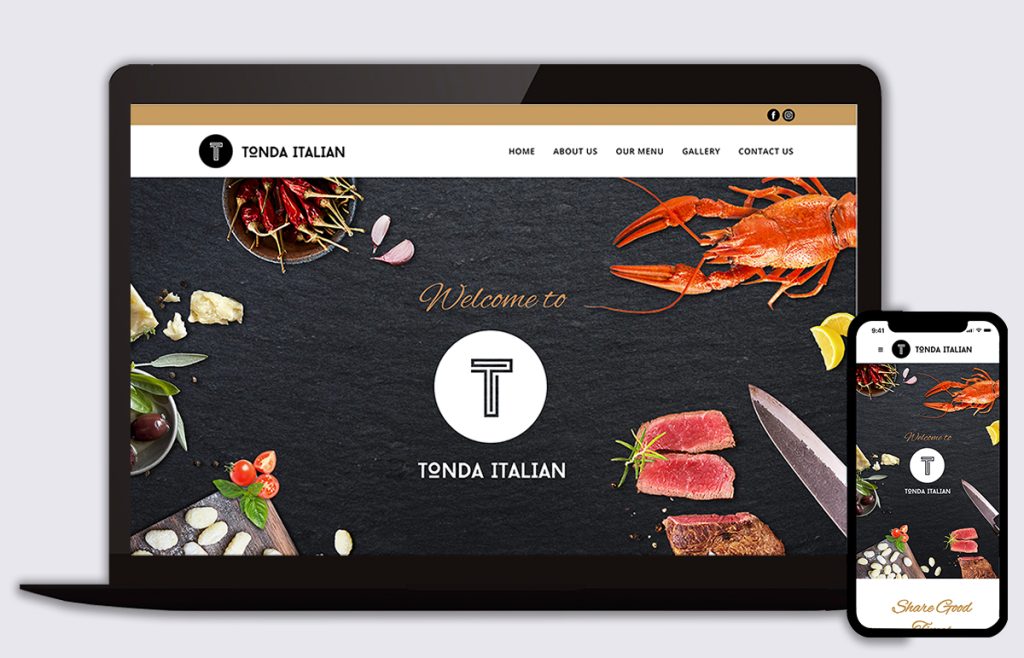
- Use a consistent layout and design across your website's pages. Group related content together and use visual cues like whitespace and borders to create clear distinctions between different sections.
- Unorganized pages harm your website's SEO. Clear, organized pages are preferred by search engines, improving indexing and search ranking. A cluttered website may confuse search engines, decrease traffic and lead to higher bounce rates.
8. Ongoing Maintenance & Support
8. Ongoing Maintenance & Support
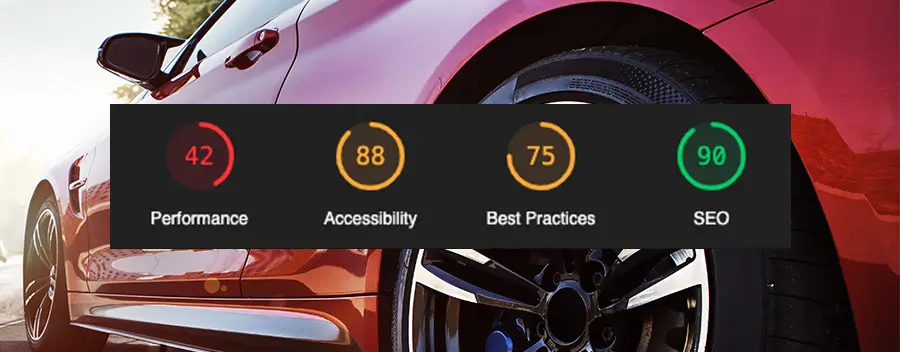
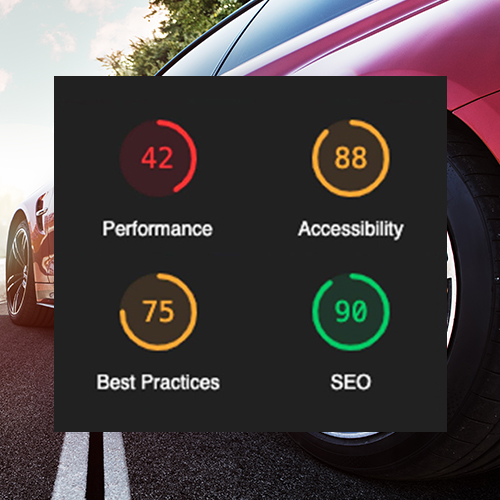
We all understand the value & importance of servicing our car regularly. The same principles apply to your website. Maintaining your website is crucial for security, performance, compatibility, SEO, user experience, and brand reputation. By investing time and effort in regular maintenance, you can ensure that your website remains effective, engaging, and aligned with the ever-changing digital landscape.
- Perform regular backups to safeguard against data loss.
- Keep software and plugins up to date for security.
- Optimize performance by compressing files and using caching.
- Check for broken links and monitor for errors
- Scan for malware and implement security measures.
- Ensure mobile responsiveness for a seamless user experience.
- Optimize SEO elements and analyse website traffic.
- Gather user feedback and conduct usability testing.
- Update content regularly to keep it fresh and relevant.
- Monitor website uptime and performance.
Regularly backup your website:
Make it a habit to frequently back up your website to safeguard against data loss. Backups provide a safety net, allowing easy restoration in case of issues during development or other unforeseen circumstances.
Continuous learning and improvement:
Stay current with the latest web development trends, techniques, and technologies. Embrace a mindset of continuous learning to enhance your skills and deliver exceptional websites, remaining competitive in the ever-evolving industry.
- Without ongoing maintenance and support, you could be exposed to security risks, poor speed performance & user experience, decreased search engine visibility, missed business opportunities, lost revenue, and damage to your brand reputation.
9. Optimise Your Website Banner & Use CTAs Strategically
9. Optimise Your Website Banner & Use CTAs Strategically
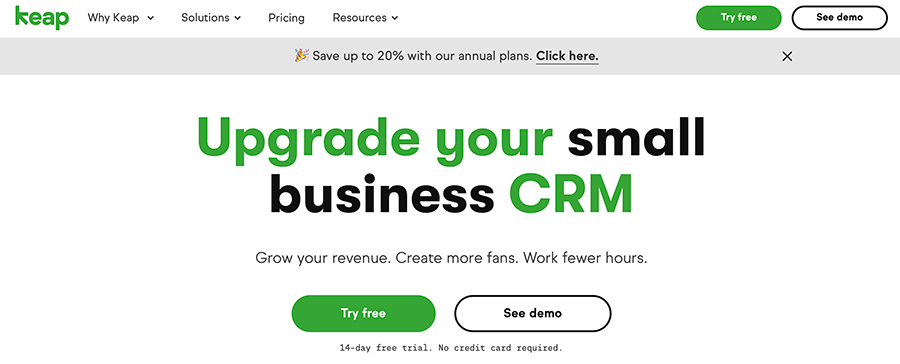
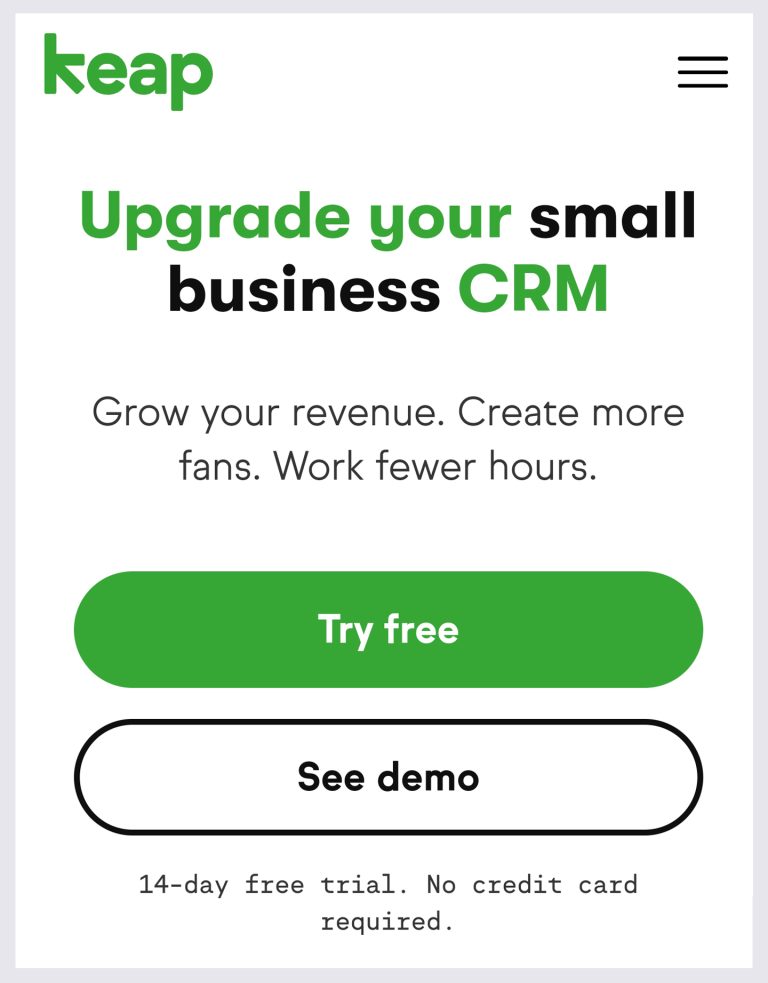
Your website banner is prime real estate and plays a crucial role in capturing the attention of visitors. Don’t be afraid to push boundaries and stand out from the crowd with a bold and unique approach and optimize your website banner and use call-to-action (CTA) buttons wisely.
- Employ effective graphic design techniques to create a visually appealing banner that stands out. Experiment with unconventional layouts, captivating visuals, and compelling messaging. Use attention-grabbing colours, striking typography, and captivating imagery to make a strong impact. Ensure that your CTA buttons are clear and prominently displayed, guiding users towards the desired action.
- Without a compelling and attention-grabbing banner, users may overlook important calls to action, resulting in decreased click-through rates, high bounce rates and lower conversion rates.
10. Content Is King!
10. Content Is King!


Finally, it’s important to remember that content is king. Your website’s content should be well-written, informative, helpful, and engaging. Craft compelling title tags, concise meta descriptions, and descriptive alt tags for images. These elements enhance visibility, improve click-through rates, and boost search engine rankings.
- Conduct thorough research and serve compelling, relevant, and valuable content for your target audience. Use proper formatting, such as headings, subheadings, and bullet points, to make your content easy to read. Incorporate relevant keywords to improve your website's search engine optimization (SEO).
- Poor content can damage your brand reputation and reduce trust in your products or services.
A Company You Know, A Strategy You Might Not
A Company You Know, A Strategy You Might Not


One shining example of a company that effectively implemented the web development tips highlighted in this article is “Shopify“. With a focus on enhancing their online presence, they implemented the following key strategies:
- Mobile Responsiveness: Shopify ensures their platform is optimized for mobile devices, providing a seamless shopping experience.
- User-Friendly Interface: They prioritize simplicity and intuitive navigation for both store owners and customers.
- Fast Page Load Speed: Shopify optimizes page load speed using caching techniques and content delivery networks.
- Secure Payment Processing: They offer secure payment gateways and SSL encryption for safe transactions.
Conclusion
In today’s digital age, a website has become the crucial “shop front” of any business. With so many options available to attract and convert visitors, it’s important to make sure that you are not getting left behind. Common Website development mistakes can cost you serious business money and damage your brand image, so, implementing the tips outlined in this article will not only aid in effective website marketing, but also aid in the establishment of a solid brand reputation in a timely manner.
Conclusion
In today’s digital age, a website has become the crucial “shop front” of any business. With so many options available to attract and convert visitors, it’s important to make sure that you are not getting left behind. Common Website development mistakes can cost you serious business money and damage your brand image, so, implementing the tips outlined in this article will not only aid in effective website marketing, but also aid in the establishment of a solid brand reputation in a timely manner.
Take your online presence to next level:
Discover the importance of synergy between your website and marketing efforts. By integrating your website and marketing channels seamlessly, you can unlock the full potential of your brand and reach new heights of success.
To help you embark on this journey, we offer you our first tip: take the initiative to fill out our form for a FREE CONSULTATION. Our expert team is eagerly waiting to provide you with valuable insights and tailor-made solutions specifically designed for your business.
Take your online presence to next level:
Discover the importance of synergy between your website and marketing efforts. By integrating your website and marketing channels seamlessly, you can unlock the full potential of your brand and reach new heights of success.
To help you embark on this journey, we offer you our first tip: take the initiative to fill out our form for a FREE CONSULTATION. Our expert team is eagerly waiting to provide you with valuable insights and tailor-made solutions specifically designed for your business.
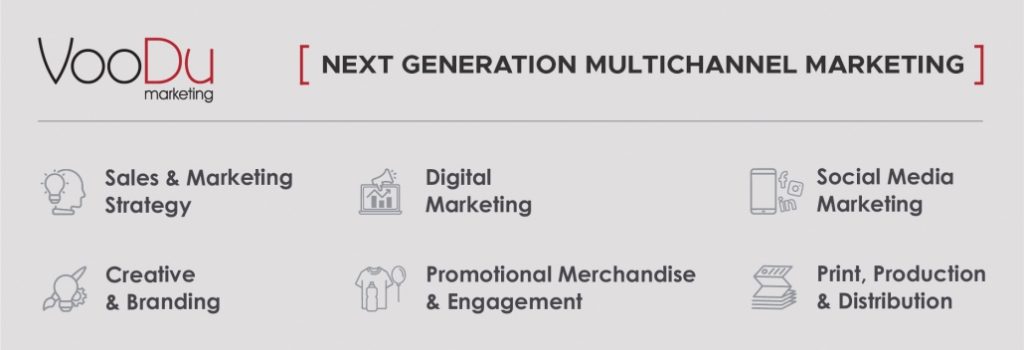
So, what are you waiting for?
So, what are you waiting for?
If you’re ready to hit the ground running with a super-charged team of multi-channel marketing specialists, complete the form below to book a FREE CONSULTATION.



